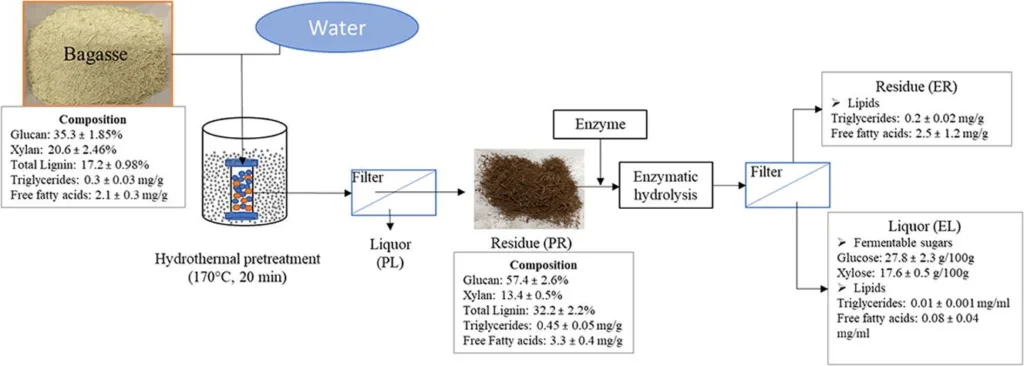Hydrothermal Pretreatment for Valorization of Genetically Engineered Bioenergy Crop for Lipid and Cellulosic Sugar Recovery
Themes: Conversion, Feedstock Production
Keywords: Feedstock Bioprocessing
Citation
Singh, R., Liu, H., Shanklin, J., Singh, V. Aug. 21, 2021. “Hydrothermal Pretreatment for Valorization of Genetically Engineered Bioenergy Crop for Lipid and Cellulosic Sugar Recovery.” Bioresource Technology 341, 125817. DOI: 10.1016/j.biortech.2021.125817.
Overview

Lipids accumulated in the vegetative tissues of cellulosic feedstocks can be a potential raw material for biodiesel and bioethanol production. In this work, bagasse of genetically engineered sorghum was subjected to liquid hot-water pretreatment at 170, 180, and 190 °C for different reaction time. Under the optimal pretreatment condition (170 °C, 20 min), the residue was enriched in glucan (57.39 ± 2.63 % w/w) and xylan (13.38 ± 0.49 % w/w). The total lipid content of the pretreated residue was 6.81% w/w, similar to that observed in untreated bagasse (6.30% w/w). Pretreatment improved the enzymatic digestibility of bagasse, allowing a recovery of 79% w/w and 86% w/w of glucose and xylose, respectively. The pretreatment and enzymatic saccharification resulted in a 2-fold increase in total lipid in enzymatic residue compared to the original bagasse. Thus, pretreatment and enzymatic hydrolysis enabled high sugar recovery while concentrating triglycerides and free fatty acids in the residue.
Data
Download (4.3 KB) includes:
- Bagasse, residue, and autohydrolysate composition analysis
- Sugar recovery
- Lipid concentrations